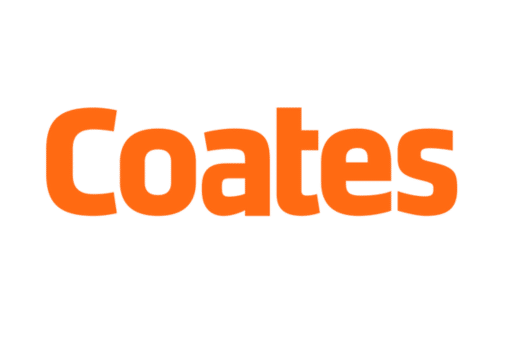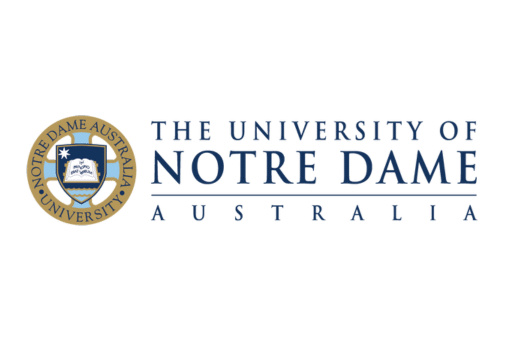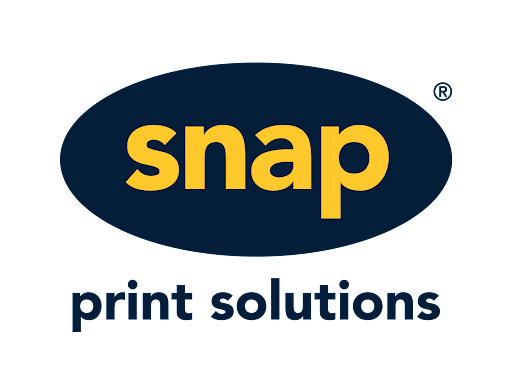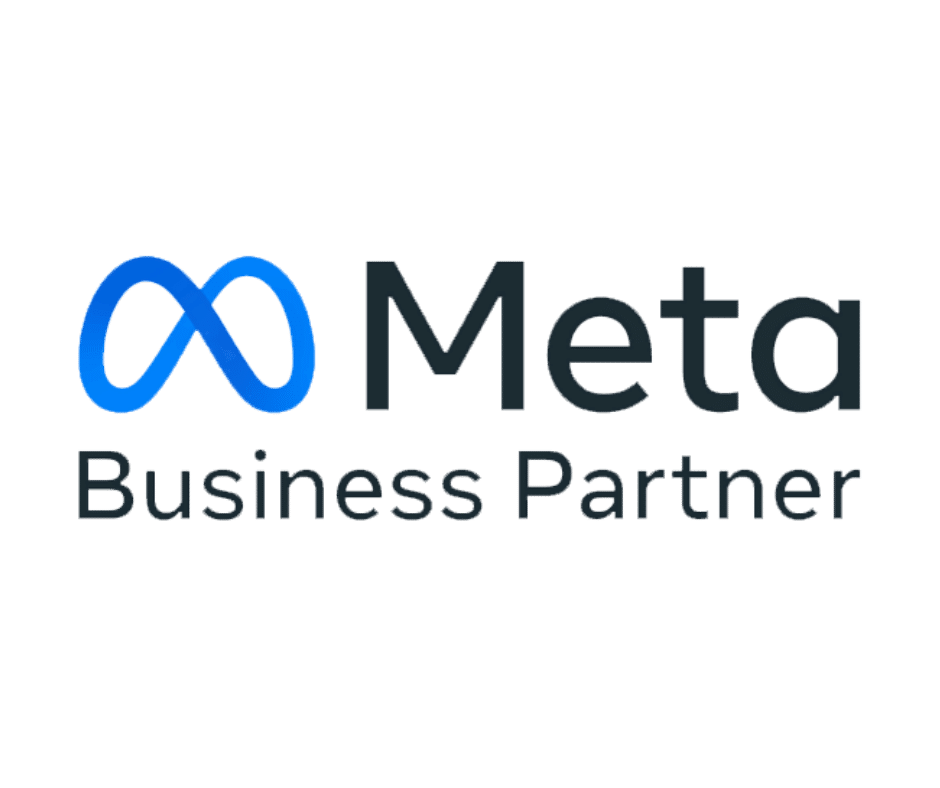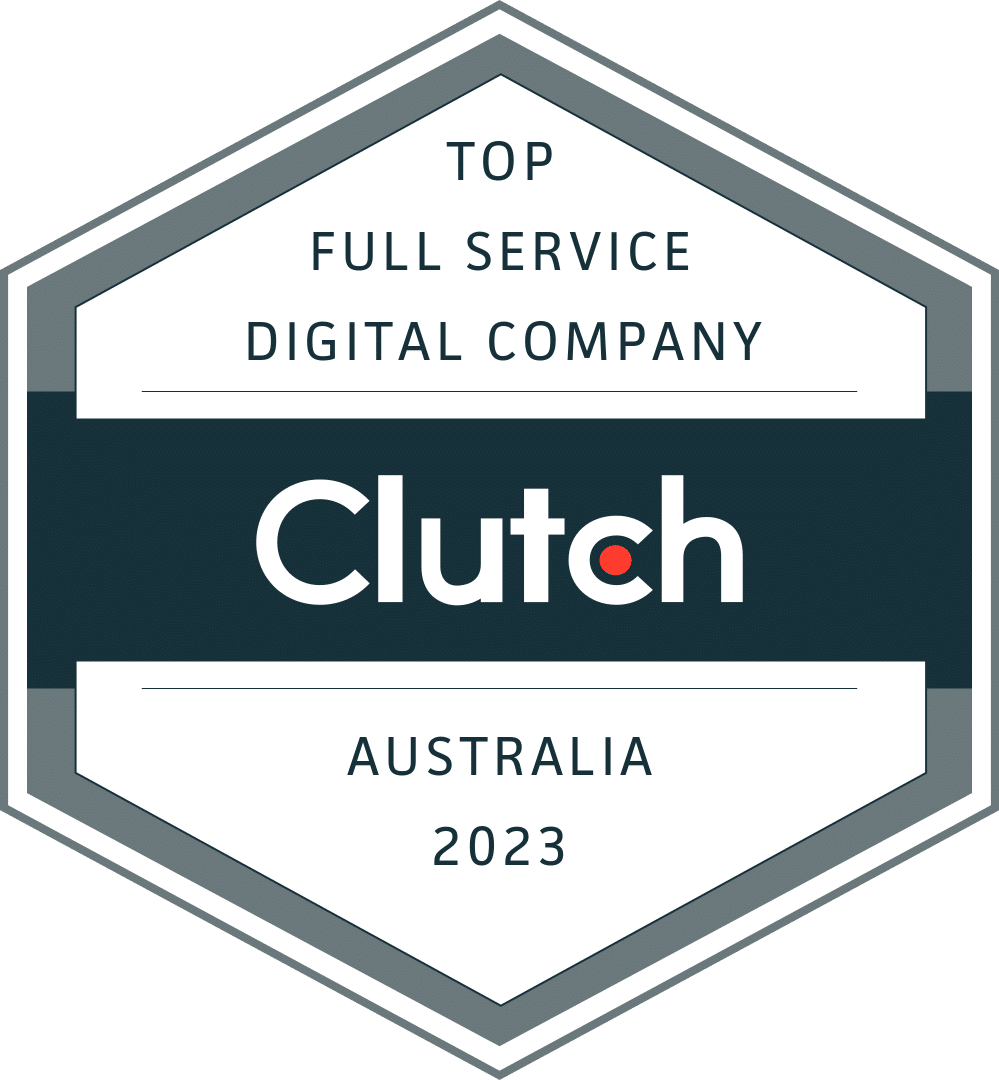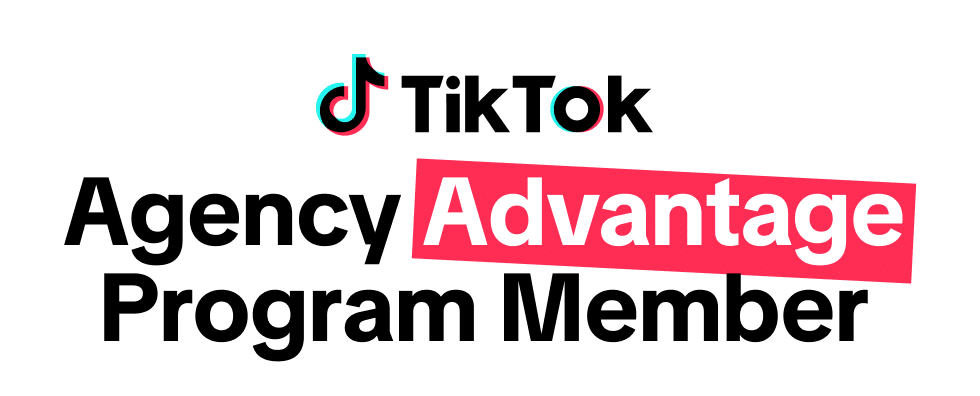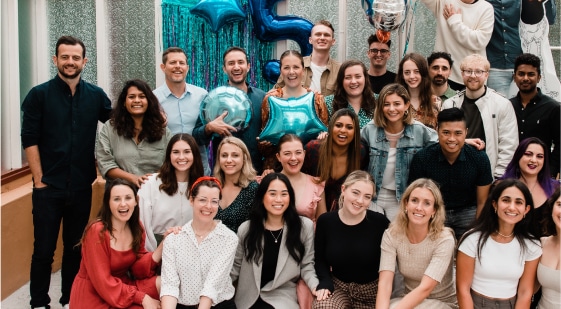B2B Marketing in 2023
Episode Description:
In this episode, James Lawrence and Stuart Jaffray, MD of highly regarded Australian B2B marketing agency, Green Hat, discuss the state of B2B marketing as we near the halfway mark of 2023. They discuss what the best performing B2B marketing teams are doing to increase leads and sales.
Key Takeaways:
- Stuart’s career journey to becoming a B2B leader.
- The key differences between B2B and B2C marketing strategies in 2023.
- How to leverage account-based marketing (ABM) or account based experience (ABX).
- The 95/5 rule: 95% of your audience are out of market, and only 5% are in market considering your product/service.
- How much should be invested into brand building v activation.
- Movement towards B2H: business to human.
- Content marketing as it applies to B2B.
Featuring:
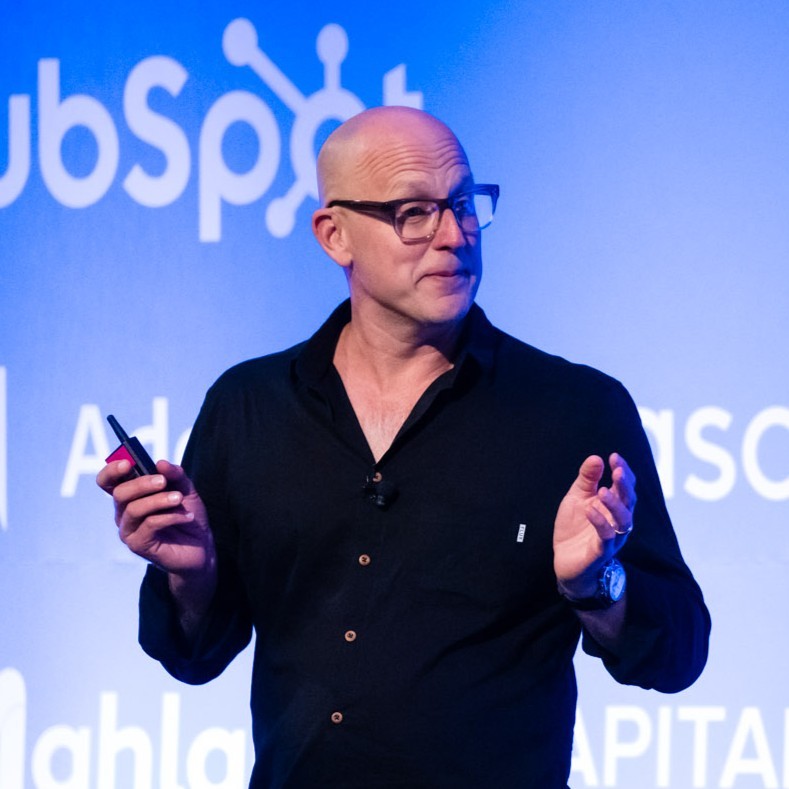
Stuart Jaffray
About the Guests:
Stuart Jaffray is the Managing Director at Green Hat, an integrated marketing agency specialising in Business-to-Business. He worked for BMW for over 10 years as Brand Communication & Marketing Services Manager as well as General Marketing Manager. Stuart also presented at the B2B Marketing Leaders Forum in Sydney. You can follow him on LinkedIn or visit his website.
Podcast Summary: B2B Marketing in 2023
Stuart Jaffray, MD of highly regarded Australian B2B marketing agency, Green Hat, discusses the state of B2B marketing and how to drive B2B strategy.
B2B marketing is subject to long and complex buyer journeys, a vast number of touchpoints, and the reality that most of your target audience isn’t currently in the market to purchase. Nevertheless, at the heart of all marketing, the reality is that you’re dealing with humans, who have both an emotional and rational involvement while making decisions.
As a B2B business, you’re not just dealing with humans at an individual level, you are having to convince a buying group of anywhere between 5-30 people, that your product or service is the best solution to the problem they're facing. What’s more, there are some decision-making processes that can take more than 3 years and involve millions of dollars.
In B2C, the impact is relatively low - you could walk into Coles, buy a bottle of shampoo that you don’t like and end up wasting $20. On the other hand, in the B2B world, your purchase decisions have the potential to completely strangle the business, and place both your job and company at risk.
Ultimately, the emotional side of influencing behaviour of both individual consumers and buying groups is just as important for B2B companies as it is for B2C.
95% of your audience are currently out of market
One of the key challenges in B2B marketing is that only about 5% of your target audience is actively in the market at any given time. Neglecting the remaining 95% means ignoring your future cash flows - placing the longevity and long-term success of your business in jeopardy. Historically, marketers have primarily focused on the active 5% with bottom-of-the-funnel, sales activation activities for short-term wins, while overlooking the wider audience. It's crucial to develop strategies that build relationships and engage with potential customers who are not yet actively seeking a solution.
Brand building vs. sales activation
The time it takes to convert a B2B deal is much longer than for most B2C purchases - with many sales processes withstanding years of research, conversation and contemplation. Therefore, investing the majority of your marketing budget into the 5% of your audience who are ready to buy, will hinder potential prospects who may not be aware of your brand and offering.
It’s therefore recommended that B2B companies invest roughly 45% of their marketing budget into brand-building activities, while the remaining 55% should be allocated to sales activation. This exact number differs based on your product/service offering as well as the industry you’re in, but the premise remains the same.
Challenge the notion of leads and MQLs
There is much emphasis placed on generating an increased number of leads - most importantly more high-quality leads - typically through completing a form on your website. The reality is, no matter who you are or how big your brand is, only around 3% of the people coming to your website are going to fill out a form. If this is the case, how are you engaging with the other 97% of your website visitors?
While you may not be able to identify at an individual level the users who attended your website, you can confirm this on an account based level. By identifying the intent and building activities to target those accounts, engage them with inspiring or informative content that is relevant to their needs, you are capturing their attention and provoking interest in your offering. Can you establish an effective remarketing campaign on through display ads, or social media content? Can you introduce an email marketing nurture campaign to repeat website visitors in the last 30 days?
How can you generate valuable content
Consider your content from a pre-intent perspective. What activities or channels can you operate in that places your brand in front of your ideal consumer before they even realise what problem they’re trying to solve? What types of personalised messages are you going to serve your audience based on the intent they’re showing, that will ultimately move them down the sales funnel?
One way to generate excellent content is through webinars - they are an effective activity to communicate your core offering by providing thorough and practical content to an engaged and often interactive audience. But simply running a single webinar today is not going to lead to an influx of leads tomorrow. It is going to do something in the longer term from a brand perspective, especially when backed by a strategic nurture email campaign or targeted PPC ads.
Additionally, content that has typically existed in the B2B space is quite dense and extremely technical in nature. This is especially the case with long-form content, such as 80+ page guides. Nowadays, especially with the rise of short-form videos and YouTube, there is a drive towards snackable, digestive content that is presented in a more captivating way for audiences.
Account based marketing (ABM)
ABM or ‘account based marketing’ is essentially the focus or alignment of your business on a specific number of accounts or businesses that sit within or reside within your ICP; ideal customer profile.
Nowadays, this is moving towards ABX, or account based experience, and requires a clear alignment between all facets of both sales, marketing and customer experience teams to work effectively. Another new term is ABE, or account based everything.
You need to be inquisitive to succeed in marketing
Inquisitivy is paramount to growth as a marketer, but also for the business you are working for. Expose yourself to reports, publications, speakers and resources in the industry, especially if you are operating in a niche industry. While you are observing the efforts of your direct competitors, it can be easy to lose sight of the bigger macroenvironmental shifts and updates that are occurring.
Also, make sure you know your target audience - and not just on a surface level. If they are from a particular geographical location, it is your responsibility to go there and meet with them, experience their lifestyle, the challenges they face, and the culture of the area. You cannot effectively sell to your audience if you don’t know their core drivers at a deep and purposeful level.
If you need a second opinion on your B2B digital marketing strategy, contact the experts at Rocket.
Transcript
James Lawrence: Welcome back to the Smarter Marketer Podcast. I'm here today with Stuart Jaffray. Stuart, welcome to the pod.
Stuart Jaffray: James thanks for having me. I'm excited to be here.
James Lawrence: I'm excited about this one as well. So Stewart is the Managing Director at Greenhat. Founded in 2001, Greenhat is a highly regarded Australian B2B marketing agency working in areas like Beta B, strategy, content, ABM, automation, digital and more. Greenhat works with clients such as Nestle, Next, DC, Superloop, Mimecast and Corn Ferry. Stuart, welcome to the pod. Really keen to dig deep into B2B marketing in 2023. I think you've got a really interesting career journey and I think the different roles and the places you've worked since you started in your career kind of shape what you're doing today and are very relevant to the types of work that you're doing at Greenhat with the team. So I think it'd be awesome just to start with that, just to talk about your career and the roles and the influences and where you've been.
Stuart Jaffray: That's a nice easy one to kick us off, James. Thank you. So, look, the short answer to that is DM agency, DM agency, client media agency, B2B agency.
James Lawrence: Obviously we're done. Podcast over.
Stuart Jaffray: Exactly right. So there's a mix in there of creative agencies, client media, and then into B2 B. So I kick started my career in a DM agency, as was back then. We were running databases, fax back campaigns. Can you believe they were a thing? I still wake up some nights thinking; ‘I wonder if there are still some responses down the back of one of the machines that we never actually answered?’.
James Lawrence: We used to have a fax machine back in our old business. And then someone said, there's this service which is like a PDF is sent, and then emails you the copy of the fax. And it was frighteningly recently that we actually disabled that service. It was going to a mailbox that we didn't didn't attend anymore. But I don't know, it's like the soldiers that were found in 1947 still fighting in the Second World War. I reckon there's still some subscriptions and things for clients that are just sitting there somewhere that we never knew existed.
Stuart Jaffray: So look at the DM agency. So I started in London and then I moved to Sydney again into a DM agency. I mean, they're now called CRM agencies and other things as well. But for me, when I started, it was direct marketing. I had studied accounting and I had studied marketing at university. And for me, it sort of combined the two things. There was an accountability, if you like. An acountability about what we were doing from a marketing perspective that I really enjoyed. So it enabled me to stimulate that part of my brain and I really enjoyed the creative side as well. So if look back now, what that had started to demonstrate to me was sort of how you could start to, I guess, as a marketer to bridge that gap between creativity and business strategy. And I think that's sort of fundamentally a lot of what we're tasked to do. So that was the start of the journey. I reached a stage within.
Stuart Jaffray: So Simon Richards Group was the agency I worked for in Australia, in both Sydney and then in Melbourne, and I'd reached a stage there where I had this just hang to go client side, if you like. Grass was greener over there, as I saw it at the time, and I'd been working on a couple of auto accounts. I was actually approached by BMW to go over there and head up CRM for them and a this sort of desire to go and see what it was really like on client side because I hadn't done it before. And bviously, the call of BMW, which is just a wonderful brand, and it was a privilege to work on the BMW brand for what ended up being nearly ten years. For me, it was just too big an opportunity to sort of turn down. So I went over there initially as the CRM manage. Look, I'm dating myself already in this call. Right. I've talked about faxbacks already. We were doing a lot of direct mail.
James Lawrence: You did start when you were five, though.
Stuart Jaffray: Yeah, that's exactly right. Thank you, James. So kind. So, a lot of direct mail. But the part that I started to really become fascinated about, there was the insight and the intelligence that was sitting within the CRM at the time. There was this oracle database and essentially how untapped that resource was. But also for me, the other part within an auto was that how much of what we were doing at the time was outbound, sort of post purchase communications, rather than actually using the power of what we had there. To identify people that were likely to be in market because we had finance data in there and insurance data and all of these other things. You got service data in there and how we could actually start to bring this together to drive sales and repeat sales from within the audience. So we went aggressively down that journey.
Stuart Jaffray: Over my tenure there at BMW, I then took digital. So digital, at the time I joined, was separate. That came into my team. And then over time, I took in sort of brand and product and ultimately sort of became the CMO of BMW, which was a job that I had there for just over three years. And it was a wonderful experience. As I said, BMW is an amazing brand. The product's fantastic. The opportunity to be able to sort of steer that, if you like, within the Australian market was just phenomenal for me. I thoroughly enjoyed it. I look back at that period really fondly. I'm still a convert, I still love the product. I'm fairly one eyed about that from an auto perspective as well. But again, I'd reached a stage then at BMW where you've had that role for three years, what's going to happen next? And one of the areas for me at BMW where I had significant influence was in media. You are taking creative from global. We repurpose it, repurposing as we sort of sort of fit in the Australia market. But you had complete autonomy, really, around the sort of media side. And I developed a sort of keen interest around that.
Stuart Jaffray: And the opportunity existed there for me to go over to Starcom to become managing director for them in the Melbourne market. I'd plateaued at BMW. I needed to do something else. It was go and do something else at BMW. I didn't want to take a sales role or something like that, BMW, go overseas with them. I've got a family here. And so the opportunity came up for Starcom and I took it. And as with moving from Simon Richards group, as it was into BMW, the move from BMW to Starcom was something that the learning curve, again was immense. Because you've sat from the outside watching the media and influencing the outcomes with the media agency. But it's a very different beast once you're inside it. Culturally.
Stuart Jaffray: I'd worked at agencies before, obviously, but culturally, coming out of a suit and tie, fairly structured and organised business as BMW was into a media agency, the cultural change was something that took me quite a while I think, to be fair, to adjust back into and again over a three year period there. The learnings for me were immense. And I think that part of that working within the publicist group at the time as well, the investment that was going on into things like Epsilon and the tech stacks there, I was fascinated by. And I really enjoyed those sides of what we were able to do there to solve client problems in really interesting, fascinating ways beyond spots and dots and media.
James Lawrence: Right. So what were some of the misconceptions you had, I guess having been client side for so long, I imagine that you're buying media on behalf of BMW, using an agency like the one you ended up going to. What were some of those learnings, I guess, that you kind of thought, well, this is very different, being on the other side of the fence now,
Stuart Jaffray: I think that clients and sitting on the client side, you see the output from the agent, which is at the end of the day, it's 20 slides of PowerPoint. Probably ten of them are of value. And there's a media schedule at the back. Right. I'm distilling it down to a really simplistic sort of version of what you get out there's a rigor that exists. You don't see you scratch the sides of that as a client. And so the rigor that exists within the media agency to get to the recommendation, I think, is something that is very easy, sitting on the client side to sort of dismiss at times, and the discipline that goes behind that to get there as well, which was something that I think that was quite eye opening to me. I had what I thought was a good, understanding of how they got there, but there's a lot more to it.
Stuart Jaffray: I think the other thing as well, which I was staggered by, was the we have this notion of programmatic, and it's not AI right. Programmatic is heavily influenced by a human being. The amount of work that pours in from the programmatic teams to get to the outcome and the amount of human intervention that's actually required there. I was staggered by that. I sat with some of the team over a period of days, actually, and I just sat next to them to see what they were doing. And I would sit there and go, my goodness me. There were areas like that that I had a lot more respect, I think, for what they were doing than necessarily what I'd had before.
Stuart Jaffray: One more thing very quickly as well, I think the other thing there coming out of BMW, right? I’ve been there for ten years. I knew a lot about auto. I think, coming back into an agency, my exposure across other categories; FMCG as an example, banking, finance, et cetera, and retail. One of the things I realised very quickly was that at BMW it had been very easy to become fixated on what the other autos were doing and not necessarily taking enough inspiration from outside of category. There are things, the deployment of growth theory from the FMCGs that I look back at now and say, I wish I'd had some more of that when I was at BMW. In my kitbag, you rely on the agencies to be provoking that around you. But as a senior marketer at the time, I wish I'd had more of that, because I could have driven more of that agenda myself. So that's the other big thing that I got out of coming back into an agency environment was just that the application of marketing science in different ways across different categories and sort of being able to just sort of suck all of that up and work out where to deploy that in the right way across different categories and different clients.
Stuart Jaffray: So then I think I'd reached a stage at Darkcom where I wasn't convinced that media, for me personally, that was what I wanted to do for the rest of my life. I had enjoyed it. But I had reached a stage there to say, I'm not convinced this is me and my future. Right? So the opportunity again, it's an independent agency. This is very different to the construct that I had in the structure I had around me within the publicist group. But the thing that really appealed to me there was it's a full service agency. So I look at that and say, okay, well, you look back at where my career has come so far. Here's the opportunity to take all of that and deploy that for clients from a strategic perspective, from a creative perspective, from a media perspective, from a digital perspective, from a CRM, and bring all of that to bear for our clients.
Stuart Jaffray: And in a space that I was really fascinated about around B2B. Again, I'd scratched the edges of B2B at various stages of my career. BMW would have been an example of that. Clients that we had at Starcom were primarily B2C, but they had a B2B component to what they were doing as well. So I was really interested in that. And at the moment, my focus is absolutely in B2B. I'm fascinated by the space. There's an awful lot of noise and growth around B2B. Marketing at the moment, the application of marketing science into this space we've got; there is more of that available to B2B marketers than there ever has been before which I'm really enjoying. So now, it's been a great decision, and there's a complexity to what we do in this space, which I'm fascinated about as well.
James Lawrence: It is a very interesting space. I know you've got some strong feelings about the next questions. It's just the same, isn't it, as B2C? Let's talk about it. Let's talk about the difference. And I guess Greenhat's perspective on why B2B is so different to B2C?
Stuart Jaffray: Marketing at the heart of this, and I hear people talk to this a lot as well, we're still dealing with individuals, right? And human beings, regardless of whether you're making decisions for yourself or for your business or for your family, there's a rational and emotional part. Then the emotional part often outweighs it. I mean, you see that time and time again. So there are similarities there, right? There's no question about that, because we're still ultimately looking to influence the behavior of human beings. So where it is different, though okay, first of all, you're dealing with a buying group. You're not dealing with an individual. Now, if I go back to my time at BMW, that was a complex consumer purchase because you're typically dealing with two people. Most car purchases, sort of family purchase, two people and maybe some smaller influences - your children in the background…
James Lawrence: USB charger for their iPad. I took my kids to a showroom, and that was the driver. Because there are USB chargers in the backseat. Not dictating the decision kids.
Stuart Jaffray: Then the other complexity within an auto is there's typically two cars because you're trading one and getting into another. But that's about as complicated as it goes, right? In B2B, you're dealing with a buying group. Our study we run at Greenhat, what we call the B2B Outlook Report, it's a study that we've run for 13 years now on an annual basis. Off of the back of that, I can tell you that the average size of a buying group the participants of that study are dealing with is eight people. So between five and eight actually is your average. But we have some clients where we know there are 30 people involved in that buying group. What we have to do and the complexity there from an agency perspective and for our clients, is to stitch together the signals, the buying signals from the individuals within that buying group and influence them over time. And when I say over time, some of the decision making processes here are up to three years, right? So you need an idea and you need a communication strategy that can stitch together across 30 people within an organisation over a three year period to help to influence their decision making. The other part there is the deal size. You can be dealing with a purchase where ultimately someone's going to sign off on a tech purchase that is multimillion dollars over multi years. That's fairly significant.
Stuart Jaffray: If I was to simplify this completely, I could walk into Coles now and make a spontaneous purchase on a product and bring it home, and the kids go, I don't like that. And I'll go, that's a bit of a shame. It cost me $3. I'm going to tip it down the sink. If I make a decision like that in the B2B world, that was the wrong decision for the business. I could strangle the business. With the implementation of a piece of tech that doesn't actually deliver for us, I can lose my job. There are some significant differences there in terms of the implications of the decision that we're making. Underneath all of that, though, I'll come back to where I was earlier on. There's still a core emotional component to that. So the decision making where we often go, though, given all of those factors in B2B, is highly rational, highly product led communication. I think that's where the mistake comes. That the emotional side of influencing behavior and consumers and the buying group is as important within B2B as it is within B2C.
James Lawrence: And do you feel that's changing? Do you feel that B2B marketing - I couldn't agree with you more in terms of the distinction, those core distinctions between your classic B2C, your classic B2B - but do you feel that the strategies, communication, branding, messaging, is that changing in B2B? What are you seeing over a longer period, like, say, over the last five years? Are more marketing environments, getting that right?
Stuart Jaffray: Yeah, I think so. My view on that, I said there's more marketing science available now in the B2B space than there ever has been. So I think that on that basis, we're operating somewhat in a sort of golden age there. If you look at some of the theory that exists now, if you look at Erinburg Bass, they'll tell you that 95% of your audience are out of market. Only 5% are in market at any time. And the way that then gets sort of framed out is to say that if you're not focusing on the 95%, you're ignoring your future cash flows. And I think for too long, B2B marketers focused very much on the 5% and ignored the 95%. There is now a realisation that's a mistake because you're playing the sort of law of diminishing returns.
Stuart Jaffray: I understand why it happens, though, because the other part that is different within B2B, is that B2B organisations or businesses are typically very sales led and sales dominated, which drives this focus back down to their 5%. Stronger B2B marketers can tackle that head on. Your sales leaders, and particularly your CFO as well, and your CEO should understand that all of my investment is going there, and I'm ignoring the 95%. What does this look like for the business in three, four, five years time? So that's important sort of piece for us there. Whether you agree you with the absolute numbers on this or not. They'll say what, 45% of your budget should then be going into brand and 55% in activation. That's different to consumer. But it's reflective of the fact that the time to convert a deal is so much longer. So you actually need to put more into the activation piece because it takes longer to do it. I would say over the last twelve months we're having more conversations with B2B marketers that know and understand that, and are having the right conversations internally and are therefore then empowered to have those discussions proactively with us, rather than the agency sort of push that agenda back into them.
James Lawrence: I was going to say exactly the same thing because in the 95 - 5 rule - they're all rules of thumb, right? And obviously it depends on what the product is and what the market looks like and I think no exaggeration that it's probably the 99 - 1 rule in certain areas. Right?
Stuart Jaffray: Correct.
James Lawrence: It's just no extreme and we see and hear the same thing from our clients. And I do believe that most experienced marketers that we're dealing with, they kind of know this stuff now. And I think to your point, the studies are better, the data is better, the reports, the research to actually back up the story that only 5% of our market is actually looking for a product or service like us right now. The long and the short of it type stuff, the idea that whether it's 50% brand building activities and 50% demand gen or whether it's 60 - 40, you can argue the toss depending. Absolutely right. Most of our clients when we're dealing with marketers, I think understand that. I think where sometimes they struggle is getting buy-in from different stakeholders in their organisations and whether it is finance or whether it is C-suite or whether it is - and you're right - a lot of this stuff is sales lead, right? So in this complex B2B space sales lead organisation, there's that kind of often imbalance internally and the marketers might not necessarily kind of get the equal ear of say, the CEO or the MD.
Stuart Jaffray: Yeah, absolutely right. And we still see it again, I refer back to the B2B Outlook report earlier on. So when we ran that study last year, we could see that over 25% of the respondents were still spending less than a quarter of their budget on brand. So there's still, whilst I say that clearly the conversation of discourse is changing, we still got a lot of work to do there. I think the other thing that drives that as well is that particularly when you think about this as a tech sector, there's a lot of businesses that have scaled up very very quickly within this space that have done so without really spending an awful lot of money on marketing. There was a product need that was identified there by the founder. They've built it, they've deployed it, they've started to build and scale the business and then they reach a certain stage if you like. Where we're not growing anymore. I need to fill the pipe. I need more leads. And that's where their journey in marketing goes from; do I need pamphlets for an exhibition? Do I need some demand gen? But the conversation there with those types of businesses needs to flip very quickly from, okay, we can help to support that, but unless you're doing this other piece as well, which you've never had to do before, by the way, you're going to have an issue in the longer term.
James Lawrence: And we picked up a lot of businesses at that exact juncture because we're in the SEO, Google Ads, paid social space, a lot of LinkedIn activity. And it's the classic conversation which is marketer reaches out. And we've done pretty well to date. Trade shows, conferences, sales team going out, whatever it might be. Got some good news. We've just got all these budget which we want to run a campaign to generate some leads for the sales team. And it's really hard to then reeducate and kind of go, yeah, but you're selling complex ERP software that has a three to five year kind of contract. Generally, there's only this many number of businesses in the market. They're not punching, looking for that particular search term in Google every month. The volumes just aren't there. You need to get out there and educate that market and meet them at their kind of terms, but it's definitely a challenge. What do you see working like your best clients that are generally kicking goals, smashing it? What kind of approach are they taking?
Stuart Jaffray: I think one of the couple of things here for me in the B2B space, the first is that we're consistently now challenging this sort of notion of leads, and we called an MQL. So a marketing qualified lead. The data will tell us, and it doesn't matter who you are and how big your brand is, only around 3% of the people coming to your website are going to fill out a form. And as marketers, all too often, we're obsessed with that. Right? I just need leads, leads, leads, leads, leads. I need more MQLs. More MQLs. But the reality is that the bulk of the people coming to your website don't want to fill out a form. Put my hand up now. I don't want to I don't want to receive 56 emails from you over the over the course of the next three months, because I'm preparing for this part. I went onto your website to download the report, and I was going to download it, and then I was asked for my mobile number, and I was like, just not going to I'm not going to do it. That's a different discussion.
James Lawrence: I'm not really in your target market, though, either.
Stuart Jaffray: And as with most agencies as well, we spend so much time on the client work that sometimes we need to reflect it back into our own site. It's on the agenda, by the way. So go back and have a look in six months time where I was going to go on that. So if we accept the fact that only 3% are going to fill out the form, what are we doing about the 97%? Now? The great thing in the B2B space is that there is intent data available to us. We can identify not an individual level, but we can certainly identify an account level who's coming to your site. So the smarter and the more progressive marketers are recognising, okay, those people have gone to my site for a reason. Do I care if they filled out a form or not? What I should care about as a marketer is that I can identify the account that is going there and I can now look to go back and influence the buying party within that account on the basis that that intent, if you like, is the new inbound for us.
Stuart Jaffray: So we used to be fixated on inbound inquiry and getting people to put up their hands and give us their details. Let's step back from that and accept the fact that the people don't want to do that anymore. What I can do, though is identify the intent that is out there in market, anonymous, as I said, but not anonymous at an account level. And then it's our job to be able to stitch that back together, to build the programs out and to build out the targeting, et cetera, to reach the individuals from within the buying group in that account and ensure that the sales team have an understanding of this as well, particularly in those sort of higher value, more complex arenas, so that they can get on the front foot as well. They know that Business X has been showing in 5678 signals that they're interested in our business because they keep coming back to the website, I need to reach out and I need to get on the front foot with them. And that's where I think the sort of real smarts come from. Now, within the B2B space of recognising that, I know they actually were at the forefront of that, but they definitely kind of got the reputation for it, which was Atlassian, who kind of took that more B2C approach to content, to the B2B world.
James Lawrence: We mix it up. We still have, even on the Rocket website, a lot of content will still be gated, some won't. It's still a judgment call based on the value of that data versus the content. And don't think you're going to lean towards all or nothing. I think it is just about the value you're giving and I think the report you're giving away on your website, if you can get data for that, you can always test it as well, right?
Stuart Jaffray: Absolutely you can. And there's two things as well though, that sort of drive some of the thinking around ungating for us now. One is to say that if I've got an organisation that is researching the types of product that we sell, wouldn't I prefer that it's us that's educating them and by providing the asset to them ungated, they're more likely to consume it from me. So that's a positive. I think the other is, again, this sort of fixation around an MQL, we know if we accept the fact that there is a buying party attached, it's not just one individual. My MQL is just one person. It's one individual from within the organisation. So I need, to an extent, remove my sort of fixation on that. We were talking to a CMO last week who is very clear on this. She said that she's a Stewart. Unless I have, and she talked about it as multithreading, unless I have the sales team have meetings with three individuals within an organisation, we don't count it as an opportunity because when it's only one, I'm not engaging with a buying group or a buying party. Once we have had three meetings with separate individuals within that business, or three collectively together, I know that this is a real opportunity now and we've got work to do to convert it.
James Lawrence: Interesting point. Nice term, too. We're talking before we jumped onto the pod about a physical event that you're at. Right? And it is same as a lot of the work that we do as a business. Sometimes you run a webinar or you put a pod out like this and someone reaches out, says, hey, the time's, right? Loved what you're talking about. And then sometimes it's many years, where I've seen you guys around and our contracts up with our agency and we're in the B2B space ourselves, and it's just the way the world works. And if you do take that 95 - 5 rule seriously, there'll be people out there looking at your product, considering it, they might be under contract for another 18 months with, you know, with your competitor.
Stuart Jaffray: It’s interesting then in terms of the measurement that you put around some of these. So for example, I mean, you use the example of webinars and we've had conversations in the past with people who said, I need more leads, we're going to run a webinar. I'm not sure that's the right approach here because the webinar, if you get this right from an educational perspective as well, is not necessarily going to drive a lead result for you tomorrow. It is going to do something longer term for you from a brand perspective and so getting those measurement pieces right. I think one of the mistakes that we see is the activity and the outcome being misaligned. And our job as an agency obviously is to have the right discussion there to say, okay, if that's the activity, then the way that you're measuring it is wrong, or if that's the outcome that you're looking for, then the activity is not necessarily going to deliver that. So we need to sort of pivot around that.
James Lawrence: That kind of comes back to your point before around being ten years in BMW and then jumping across back into agency land and having this exposure to all these different categories. And it's the same. I think probably for both of us at Rocket and Greenhat, we kind of have that perspective, right, where if you are dealing with a marketing team that's having that issue with sales or is trying to kind of see webinars as a way of generating MQLs that in three months time are going to lead to SQLs... It's kind of going, well, that's not really how it's working for other 20 clients or 10 clients that have done the same thing over the last couple of years in terms of that data piece to know that a certain company is interested in content. You guys are just doing that through CRM.
Stuart Jaffray: There are a number of ways you can get at this for clients, for example, that have the platform, we're using the intent data that they have access to. We work very closely with organisations and with businesses like Bombora as well who can provide that intent data through to us. Where it becomes really powerful is when I can start to stitch together first party intent so what's happening on your site and then a third party intent as well. In fact, I'll do it the other way around. So start with a third party intent. So I can see that a business is showing intent for a particular product or a particular category, but they're not coming to your site yet. Once I can then combine those two things together and say now I can see that the intent is happening on your site as well. Things are escalating there. They're reaching a different stage of research for some of our clients now, where we're actually starting to sort of push and provoke this out to is to say, okay, what are the intent signals that happen before the intent signal? So we call it pre intent.
Stuart Jaffray: For example, we can see that a business is starting to employ certain types of individuals within the organisation. It's suggestive that they're going on a particular journey from a tech perspective that is going to ultimately lead to them needing the type of product you sell. So from a pre-intent perspective, the job there is to be serving them up brand and educational messages so that when they actually get to that decision now, okay, we're ready to move forward. The organisation is now ready for this. From a purchase perspective, your brand or your business is the first they're actually going to talk to. You're the one that they're familiar with. So I think that there's still a lot of growth for us from deploying that type of data with the tech enablement that we now have to really provide meaningful dialogue between businesses. So the seller and the potential buyer I like to look at that to say that a lot of your activity is waiter based. So you're sort of waiting to see that their interested and then sort of serving up as you would in a restaurant where we would like to see this is more of a sort of butler analogy, where I've actually realised what it is that you're looking for before you actually realised it. Therefore I can serve these communications up to you in advance. And I think that's cool.
James Lawrence: I think that's exciting because the next area I wanted to talk about was account based marketing. ABM. Is that that or would that be a little bit different once you're actually more proactive going out to an organisation where you think there's a fit?
Stuart Jaffray: Look, yes, everything that we've talked about so far cascades down into account based marketing. Account based marketing, there are three levels of it which I'll get to in a minute. But essentially when you distill it down in terms of what account based marketing is about, it is about focusing or focus or alignment of the business on a specific number of accounts or businesses that sit within or reside within their ICP, within their ideal customer profile that we're agreed and aligned that we're going after. Now within the B2B space, you should be able to do that. If you don't have a clearly defined ICP, you can't embark on an ABM program.
Stuart Jaffray: We actually call it ABX. Now I don't like the term ‘account based marketing’. And the reason for that is that ABX - account based experience - requires absolute alignment between all facets of the organisation’s sales, marketing and customer experience teams. If you have that right, where you then get to, and this is going to come down to sort of deal sizes and the type of business you are, is whether we're running a 1-1 ABM player, one to fewer, or one to many. And so if I'll give you an example of that, if I was working in a category where I was looking to convert defense, so within government, the process of doing that and converting defense if I'm in the tech space is a significant play. This is a two to three year play. Defense becomes my market. So my audience is people that work within that business or within the buying group within that business. And I'm going to build and deploy a strategy that is specific to that business and to the buying party that exists within that one.
Stuart Jaffray: We work with some clients where their one to one focus, maybe there may be five, there may be ten accounts that they're looking to over a period of time. You then may take that up to a one to few where we say, okay, we have a cluster of accounts that are in the same sector as an example, where we're going to build out experiences specifically for them. And so I've got maybe within a one to few space I'm providing communications out that are personalised down to that cluster of maybe 10, 20, 30 organizations. And then outside of that, that sort of more one to many play, where very much I'm focusing on all of those within the ICP, but all of those that were within the ICP specifically that are showing intent for me because I'm focusing on the intent, because I need to be able to drive the revenue through for the organisation. But outside of that, I may have a brand play that's running on top of that across my ICP as well. But the most important part here from an ABM perspective, and this is where we see the biggest difficulties that organisations have within ABM is that it's marketing led and it's not organisational led.
James Lawrence: I love the ABX acronym. Is that a Greenhat thing or is that a kind of industry?
Stuart Jaffray: It’s actually not. Let's put a trademark after it and say, powered by Greenhat, but no.
James Lawrence: We will cut this out of the pod. Is that a greenhat thing? Yes, it is.
Stuart Jaffray: No, it's not. And we're seeing if you go on and jump onto Google, there are all sorts of extensions of that acronym
James Lawrence: Rocket to buy the keyword ABX.
Stuart Jaffray: I think ABE is the other one. I saw the other day, account based everything. Now, it's interesting, though, because when you distill it back, everything we do, a B2B perspective should be account based. Because again, you're not dealing necessarily with an individual. You are dealing yes, there are individuals there that we need to influence, but it doesn't matter. SME mid size enterprise. It's a business that I'm communicating to.
James Lawrence: What are you seeing from a digital media perspective in 2023? If we kind of talk about the last five years, and probably there is this movement towards the 95 - 5 rule and probably a better understanding of the science behind investing in brand versus kind of performance activities. How are you seeing paid LinkedIn display advertising, google ads? Has that changed much? From what side of the fence?
Stuart Jaffray: I think the biggest thing for us there, again, is the ingestion of things like intent data. To be able to power that and to ensure that we're delivering a more personalised experience in order for a better way of sort of describing that ingestion of the intent data, essentially allows me to be able to say, where is this person in terms of their buying decision? Therefore, what are the messages that I want to serve to them? So is it top of funnel, middle of funnel, bottom of funnel? So I think we're getting much more sophisticated around that because of the tech. So the mix may not be changing dramatically, but what we're doing within that is we are seeing we're actually getting a lot more success from this in terms of moving outside of what I would call traditional sort of B2B environments.
Stuart Jaffray: We use a lot of Meta for our clients, and we use it very, very successfully as well. Now they're able to reach audiences at scale for us. You get into this debate, but that's personal me, not business me. The pandemic has blurred all of those things. I'm sitting here at home today working. I'm consuming business media in my house. I'm consuming consumer media while I'm at work. And so I think those two things have become so blurred. Anyway, I don't think there's any issue with me as a managing director of an agency receiving communications that are relevant to me whilst I'm in a Facebook environment. Am I less responsive there? No, we've never had a problem with that. I think you and I agree wholeheartedly on the differences between B2B, and B2C, but when it comes to targeting individuals, it's B2H. And I think sometimes we struggle to effectively target for certain clients in B2B and Meta, but then in other times we can do it really easily and really well and using first party data remarketing retargeting absolutely. Audiences yeah, we had a really successful campaign in B2B, which is 80% Meta.
James Lawrence: In fairness, it wasn't a complex B2B purchase. We're targeting kind of smaller business owners. But yeah, I think more about your targeting there than the actual platform itself.
Stuart Jaffray: Absolutely, it is. And that's where and, again, TikTok comes into play here as well for the right B2B brands. Is that an effective environment? In fact, I know it is because we use this for clients as well and where I'm able to reach an audience and a lookalike audience within there using our first party data to be able to power that. At the end of the day, our job is to ensure that we are connecting our clients with their end consumers within the buying party and where that is happening, yes, there is a contextual relevance piece that we need to be very conscious of and that comes into play. But first and foremost, I want to ensure that we're putting the brand in front of the audience in the right way.
James Lawrence: Last theme I guess I wanted to dig into. We touched on it a little bit, but content, what are you seeing with content? Like talked a little bit about gating and ungating. You've talked a little bit about webinars and probably just resetting expectation as to what data from webinars is. But your best performing clients, the ones that are smashing out, doing great work, what's the approach to content? How's content strategy changed over the last couple of years within B2B?
Stuart Jaffray: Content is king, right? The big difference and the big change, I would say, is that there is a role for your white papers and your ebooks and that's for longer form content. What we are seeing is, I think, push and provocation from the agency but also from a lot of the CMOS to turn what was historically really dry content into something that is much, much more engaging. A lot of that long form content that existed in the past was so dense and so technical and ultimately, I think, impenetrable at times as well. So there is a genuine, I think, recognition and reflection there within the B2B space that we need to treat that in a very different way to make it so much more engaging.
Stuart Jaffray: I think turning it into snackable content as well. All of the marketing science, again, will talk to this sort of reduction in time that we're sort of focusing and attentive. So this sort of desire as well and this drive and need to serve that content up in a much more snackable and consumable fashion in more interesting in ways to do it. We're sitting here on a podcast now, converting that content into something that can be consumed by me in an audio fashion as an example, as its appeal, where I don't necessarily want to sit here and read ten pages, but I'll certainly consume that if I think it's interesting.
James Lawrence: On my way to TikTok, we're going to go viral in little bits of TikTok. I'm trying to work out the reaction from my kids. If they ever stumbled across dad on TikTok, I think they'd be horrified.
Stuart Jaffray: I think they'd be horrified.
James Lawrence: I had Lindsay and Tristan from Cello on a little while back on the pod and Lindsay mentioned Wunderman Thompson, who do an excellent kind of EDM. That content is available on the site and it is so snackable and it's so easy to absorb and it's just snippets of the key findings and they send stuff out in such a lovely manner. And just goes to show that EDMs don't have to be dense and reports don't have to be dense. Agree?
Stuart Jaffray: Yeah, agree. And ultimately, if what that then does is inspire me to go and find out more, then it's done a really good job for me. And so I think that's the other important part. There is a need at some stage within, and it's very much at the bottom of the funnel, to provide all of the rational technical information and the spec sheets and that dense, heavy information, because ultimately someone's going to have to sign off on this and ensure that they've done the due diligence. I think the difference is that that sort of recognition now that that has no role at the top and largely in the middle of the funnel as well.
James Lawrence: It’s a really interesting observation, mate. It's been an awesome chat. Last question. What career advice would you give to an in house marketer?
Stuart Jaffray: What career advice would I give? As marketers, the one thing that we always have to be is inquisitive. You need to have an inquisitive mind. So expose yourself to as much as you can. Read the marketing science. We should have a view on that and its application within our businesses. Read the marketing press, ensure that you are cross the new trends out, but also that you have an opinion. And then I would say get out of your business and just go and hang out with real people as well. Because I think sometimes as marketers, I know I did this to an extent when I was at BMW, you lose sight at times of what's going on out in the real world. So it's really important to get out there and look at what's going on more broadly culturally than just within your space and your organisations. Go on your nice luxury holidays, but make sure you go to the Royal Show as well. Get out to the regional and rural areas of Australia. Someone said to me, they were talking last month at a function and they said whenever they bore the AFR, they'd buy a tabloid as well and they'd consume both of them because they were both as important to understand what's really sort of going on out there in the marketplace.
James Lawrence: It's so true. It was an infographic. I don't know, it might have been ten years ago or so. Pretty sure it was produced by an agency. This was when North Bondi Italian was kind of the restaurant in Sydney at Bondi and basically it surveyed marketers, agency people, and it was kind of in the last six months, how many of you have been to North Bondi Italian? 87%. And it was kind of in the last month, how many have you been to North Bondi? 53%. And then the same survey was in the last year, how many of you have been to Parramatta? And 34%. How many of you have ever been to Parramatta and it's 50% and, like, literally more people have been to North Bondi Italian in the last month than had ever been to Parramatta. And Parramatta is not exactly very far from Sydney. And the idea of really understanding regional Australia or rural Australia, it's perspective, right?
Stuart Jaffray: Perspective is so important here. I think an inquisitive and a genuinely open mind here is so important in terms of what we do.
James Lawrence: Good one, mate. Thanks so much for your time. It's been great having you on the pod. Yeah, that was cool.
Stuart Jaffray: I really enjoyed the chat. James thanks for having me.

The Essential Australian B2B Marketing Guide
The 9 Things Great B2B Marketers Do.


